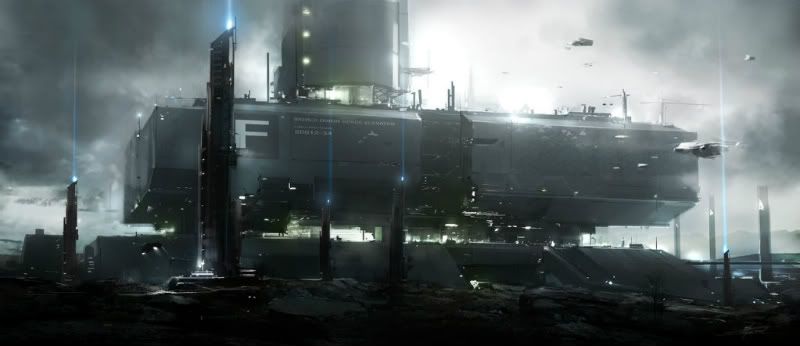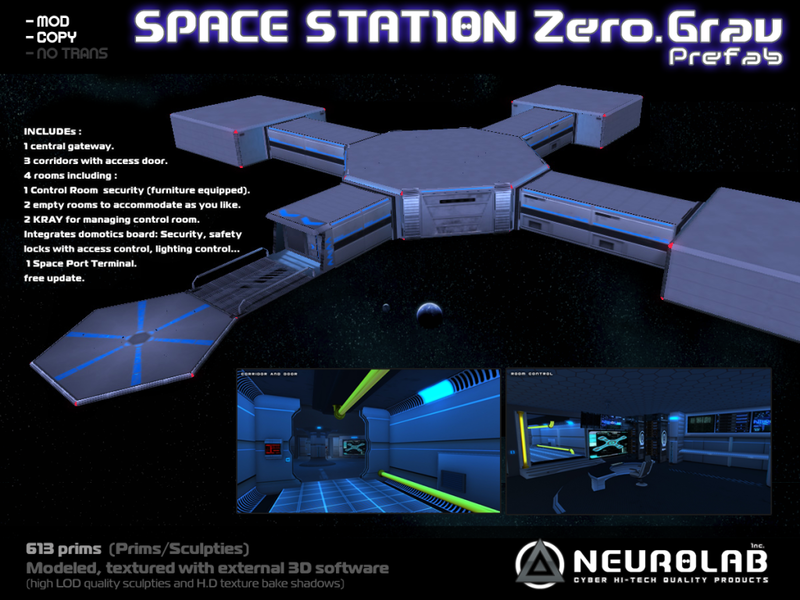PROJECT: ASCENSION
A grand project to catapult humanity into its stellar age, Project Ascension is centered around three areas. The first is a sprawling ground instillation within the city of Nova Aetas. It is a city of brilliant enlightenment, as well as unparalleled industry. In the center is the Susceptor Station, a large facility with an elevator that provides a three-hour ride into orbit to Nexus Astrum, a massive orbital station network that serves as humanity's link to the stars. Below are the specifics on each area.
Ground instillation/city statistics:
Name: Nova Aetas (“New Age”)
Power source: four subterranean nuclear fusion power stations, 10 above-ground standard power stations
Population: 41,241
Power source: four subterranean nuclear fusion power stations
Factories: 1 heavy industrial, 2 industrial, 2 fine material, 2 miscellaneous
Major facilities: 1 school, 3 hospitals, 3 research centers, 10 power stations
Nuclear station personnel: 560 (5 command staff, 10 custodial staff, 45 NEST responders, 100 soldiers, 200 scientists, 200 engineers)
Susceptor facility personnel: 300 (1 leader, 14 custodial staff, 40 mechanics, 40 engineers, 100 soldiers, 100 load crew)
Factory personnel: 400 each (1 leader, 49 custodial staff, 120 soldiers, 230 workers)
Ft. Ilanson (north side of Nova Aetas): 1,200 soldiers of the Prizyetsi Administratii
Ft. Kazden (south side of Nova Aetas): 5,000 soldiers of the Kauvaran Cohort Custodi Universae, I Legion “Honorius”
Aetas Airfield (west side of Nova Aetas): 4 KF-12 “Foxguard” Multiroles of the 0001st Vulpesian Honor Squadron, 12 KF-11 “Foxclaw” Fighters of the 6927th/8492nd/9845th Squadrons, 50 soldiers of the KAMC 1st Company
Architector Spires 1-20 personnel: 100 each (1 commander, 9 custodial staff, 20 electricians, 20 engineers, 50 soldiers)
Train stations 1-4 personnel: 50 each (1 commander, 4 custodial staff, 10 engineers, 10 electricians, 25 soldiers)
Power station 1-10 personnel: 30 each (1 commander, 4 custodial staff, 5 soldiers, 10 electricians, 10 engineers)
Architector Spire statistics:
Name: Architector 1-20
Power source: above-ground power stations
Crew: 100 each (1 commander, 9 custodial staff, 20 electricians, 20 engineers, 50 soldiers)
Weapons: SAMs, flak cannons, heavy anti-air autocannons, Nautilus THELs
Defenses: EMP-shielding, incredibly thick armor
Purpose: While the upper echelons of the elevator are protected by Defensor satellites and their Nautilus THELs, the terrestrial section is protected by the Architector Spires. Each one is filled to the brim with heavy anti-aircraft and anti-missile weapons in order to keep the elevator safe at the terrestrial level. However, they also contain a sort of "kill-switch." If a seizing of the elevator and city become imminent, each spire can network with each other, unleashing a massive electro-magnetic pulse, effectively shutting down everything in the city, including the elevator, in order to keep them out of enemy hands until they can be recaptured. Each one also projects a data stream up to Nexus Astrum, so dense with laser-guided information that they can be seen on the visual spectrum as bright blue beams of light emanating from the top of the spires.
Power station statistics:
Contains 12 deuterium injectors, 3 per column. Reaction chamber is streamlined and contains 320 high powered electromagnets powered by the reactor itself. The only thing is that it needs to be jumpstarted with a lot of electricity.
>>THE FOLLOWING IS AN EXCERPT TAKEN FROM PROYEKT 3920>>
>>PROYEKT 3920 WAS THE INITIATIVE TO CREATE POWER SOURCE>>
>>DUE TO ITS EFFORTS, PROJECT ASCENSION IS RUNNING SMOOTHLY>>
>>BEGIN EXCERPT>>
Ministry of Internal Affaires, [CENSORED]
[CENSORED] Development Facility, [CENSORED] Prefecture, Prizyetsa
Proyekt 3920
Official De-Briefing Report
Statement of Lt. Dr. Jallu Inanson
Official De-Briefing Report
Statement of Lt. Dr. Jallu Inanson
Proyekt 3920 was officially initiated on the 21st of January, 1983 by the ministry of internal affairs special projects department and I received a memo by hand on the 22nd. The memo was delivered by an Administratii “spook”, and I was instructed not to tell anyone, and to report to the [CENSORED] Development Facility in [CENSORED] Prefecture by the 24th of January. The spook gave very specific instructions on what to bring how to get there, and I noticed I was being put under surveillance until they picked me up and brought me to the facility. Once there, we were told the true nature of Proyekt 3920, to build a nuclear reactor. At first, the other scientists and I though it was just a scaled down, or more efficient reactor, but we were briefed that we would need to build a fusion reactor for a new class of submarine, although we didn’t believe them. We started construction of a traditional style nuclear reactor, but unfortunately it was a failure. We then looked into the actual process of nuclear fusion, and realized a doughnut-like chamber was needed to achieve full fusion. We decided to use Deuterium as a fuel, and the Prizyetsi Government set up deuterium refineries in secret disguised as water desalination plants along the West coast, which offered us a steady supply of deuterium to work with. We analyzed the Deuterium until we found the most efficient way to fuse it together with another element, notable Tritium, so create a “cold” fusion reaction. It took us almost two decades until we achieved a sustainable reaction in the chamber, and we ran the reactor for over 48 hours, proving that we had achieved our goal.
A few days after this, on the 30th of August, 2001, we received word from the ministry thanking us for our efforts, and issuing a new challenge; to create a pocket design capable of being used by the Marini, our navy. At the time, our reactor measured roughly 20m, by 30m by 10m, which was much to big to fit on board any ship we operated at the time. Essentially, the reactor had to be more efficient so that it offered the same power output but was a smaller size. Eventually, we managed to the reactor module down to 6m by 6m by 10m, which was the perfect size for naval use. A bonus we managed to achieve was making the reactor 108% efficient to the original module, while only being a fraction of the size. Although we achieved this, there was a strange side affect to the process. We encountered a new kind of radiation, which strangely enough, only targets cancerous cells. Currently, we are doing research into why this happens, but so far we have little to no answers.
The Proyekt 3920 team was then commissioned to a joint Prizyetsi-Kauvaran research team to find a way to integrate it into the current “Architector 17” Program >>BEFORE PROJECT WAS MADE INTO A BROADER SCALE AND DUBBED "ASCENSION">>, which is taking place on our [CENSORED]. We have so far fully integrated the reactor units into the superstructure of the [CENSORED].
Statement of Cpt. Såra Kjerran
My job was to watch over and provide any services or commodities for the team of Proyekt 3920 to ensure that the scientists could work at an optimum level. We imported custom machinery, precious metals and gasses into the facility, as well as a Class 3 Tactical Nuclear Generator in order to start the fusion process. In total, around NSD [CENSORED] was spent on the project.
>>END EXCERPT>>
Elevator statistics:
Name: Susceptor (“Carrier”)
Power source: four advanced underground fusion reactors
Crew: 5 per heavylift (1 engineer, 2 load crew, 2 marines), 1 per personal (1 marine)
Number of elevators: three heavylift/cargo, six personal
Carrying capacity: five tons per heavylift, one ton per personal
Travel time between Nova Aetas and Centralis Station: 3 hours
Appr. Nova Aetas arrival/departure times: 00:00, 06:00, 12:00, 18:00
Appr. Centralis Station arrival/departure times: 03:00, 09:00, 15:00, 21:00
Satellite Network statistics:
Name: Nexus Astrum (“Star Nexus”)
Population: 205 (minimum crew) to 240 (guests, researchers, students, VIPs, etc.)
Total stations/substations: 10 (Centralis megastation, Praeclusio storage station, Remedium medical station, Intellectus research station, Recoquo repair station, Vigilate observation station, Tempestus weapons station, 3 Defensor THEL defense stations around Centralis in triangle)
Appearance: Centralis megastation in the middle (connected to the elevator), closely orbited by three Defensor substations in triangle formation, with the five standard stations in further orbit in hexagon formation
Hub Megastation statistics:
Name: Centralis (“Central”) Megastation
Power source: solar panels, back-up battery ports
Altitude: 219 miles, 352 kilometers, 1,154,856 feet
Permanent crew: 50 (1 commander, 1 biologist/doctor, 5 electricians, 5 physicists, 8 engineers, 10 shuttle pilots, 10 elevator loaders/unloaders, 10 marines)
Maximum capacity: 10 personnel, 8 shuttles
Weapon(s): four Nautilus THELs (http://en.wikipedia.org/wiki/Tactical_high_energy_laser)
Oxygen reserves: self-generates oxygen through recycling of CO2 with one week of reserves
Facilities: Operations/Command, Habitation/dorms, Armory, basic Recreation, basic Medical (hospital located in Remedium Station), basic Storage (most extra material located in Praeclusio Station), safety shelters/airlocks, 2 shuttle docking bays (capacity: 1 shuttle each) connected to shuttle storage area (capacity: 4 shuttles each), logistical research center (main labs located in Intellectus Station), KAMC barracks
Purpose: A central command center for Nexus Astrum, Centralis Station serves as the hub for the area. It has the largest hangars, and is generally where shuttles are launched from. It also contains the logistics centers for the other stations, as well as the link to the ground via the elevator itself. It also contains the command center and primary barracks of the KAMC.
Storage Station statistics:
Name: Praeclusio (“Stores”) Station
Power source: solar panels
Altitude: 219 miles, 352 kilometers, 1,154,856 feet
Permanent crew: 15 (1 commander, 1 electrician, 1 engineer, 7 loaders/unloaders, 5 marines)
Maximum capacity: Several hundred tons of cargo, one shuttle, no guests
Weapon(s): None
Oxygen reserves: self-generates oxygen through recycling of CO2 with one day of reserves
Facilities: Operations, Habitation, five storage areas, shuttle docking bay (capacity: 1 shuttle)
Purpose: Praeclusio Station is where the materials and spare parts for Nexus Astrum are stored. From weapons to food to solar panels to shuttle parts, Praeclusio holds all the extra supplies in order to streamline the other stations.
Medical Station statistics:
Name: Remedium (“Medicine”) Station
Power source: solar panels, with back-up batteries
Altitude: 219 miles, 352 kilometers, 1,154,856 feet
Permanent crew: 25 (1 commander, 3 electricians, 3 engineers, 3 cargo loaders/unloaders, 10 medical staff, 5 marines)
Maximum capacity: 5 patients, 1 shuttle
Weapon(s): None
Oxygen reserves: self-generates oxygen through recycling of CO2 with four days of reserves
Facilities: Operations, Habitation, one storage area, shuttle docking bay (capacity: 1 shuttle), advanced medical facilities
Purpose: It is a three-hour ride back down to Nova Aetas, but only a two-minute shuttle flight to Remedium Station. This station is used when an injury is sustained that requires intensive care, and cannot wait for the next ride back down to Earth.
Research Station statistics:
Name: Intellectus (“Intelligent”) Station
Power source: solar panels
Altitude: 219 miles, 352 kilometers, 1,154,856 feet
Permanent crew: 25 (1 commander, 2 electricians, 2 engineers, 3 cargo loaders/unloaders, 12 researchers, 5 Marines)
Maximum capacity: 20 students/interns
Weapon(s): None
Oxygen reserves: self-generates oxygen through recycling of CO2 with two days of reserves
Facilities: Operations, Habitation, one storage area, shuttle docking bay (capacity: 1 shuttle), 3 laboratories, 3 observation centers, telescope
Purpose: Space is full of information to be learned by those with the mind to seek it out. Intellectus Station serves those people, ensuring research can be done in space itself. Not only that, but it also serves as the top school of astronomy and astrophysics in Kauvara.
Repair Station statistics:
Name: Recoquo (“Renew”) Station
Power source: solar panels
Altitude: 219 miles, 352 kilometers, 1,154,856 feet
Permanent crew: 20 (1 commander, 3 cargo loaders/unloaders, 5 electricians, 5 engineers, 6 marines)
Maximum capacity: 1 operational shuttle, 2 broken shuttles
Weapon(s): None
Oxygen reserves: self-generates oxygen through recycling of CO2 with two days of reserves
Facilities: Operations, Habitation, one storage area, shuttle docking bay (capacity: 1 shuttle), two repair bays (capacity: 1 broken shuttle OR two solar panels each)
Purpose: Unfortunately, Currus-class shuttles are not rated for atmospheric re-entry. As such, if one breaks down, it has to be repaired in orbit. This is where Recoquo Station comes in. It allows shuttles, as well as solar panels or any other equipment, to be repaired quickly, without having to take the three-hour ride down to Nova Aetas.
Observation Station statistics:
Name: Vigilate (“Watchful”) Station
Power source: solar panels
Altitude: 219 miles, 352 kilometers, 1,154,856 feet
Permanent crew: 20 (1 commander, 3 cargo loaders/unloaders, 5 electricians, 5 engineers, 6 marines)
Maximum capacity: 1 shuttle
Weapon(s): two Nautilus THELs (http://en.wikipedia.org/wiki/Tactical_high_energy_laser)
Oxygen reserves: self-generates oxygen through recycling of CO2 with five days of reserves
Facilities: Operations, Habitation, one storage area, shuttle docking bay (capacity: 1 shuttle), observation center (links to Kauvaran and Prizyetsi observation satellite network)
Purpose: Kauvara maintains a highly-advanced network of observation satellites for intelligence gathering. Before Nexus Astrum, each satellite had to be painstakingly monitored from the ground. Now, however, each one is linked to Vigilate Station, where information can be quickly received and relayed across the globe to wherever it is needed.
Weapons Platform substations statistics:
Name: Defensor (“Guardian”) Stations 1-3
Power source: solar panels
Altitude: 219 miles, 352 kilometers, 1,154,856 feet
Permanent crew: 5 (1 commander, 1 electrician, 1 engineer, 1 marine, 1 cargo loader/unloader)
Maximum capacity: Nothing beyond current capacity
Weapon(s): 5 Nautilus THELs (http://en.wikipedia.org/wiki/Tactical_high_energy_laser)
Oxygen reserves: self-generates oxygen through recycling of CO2 with one day of reserves
Facilities: Operations, Basic Habitation, storage area, five THEL suites
Purpose: Orbit is a very dangerous place. There are all manner of threats. Missiles, debris, etc. could easily wipe it out. This is where the Defensor Platforms come into play. Each one is armed with five Nautilus THELs, easily capable of disabling most any threat with pinpoint laser fire (the THEL shot down 28 Katyusha rockets and 5 artillery shells during trials).
Inter-station shuttle statistics:
Name: Currus (“Chariot”)
Crew: 2-4 (pilot, co-pilot/gunner, non-essential engineer, non-essential marine)
Maximum capacity: 10 passengers, two tons of cargo, 1 shuttle
Weapon(s): one Nautilus THEL (http://en.wikipedia.org/wiki/Tactical_high_energy_laser)
Oxygen reserves: one week with no passengers, 2 days with full compartment
Purpose: Travel between each station is tricky. Due to the orbiting nature, a simple spacewalk is out of the question. This is where the Currus-class Interstation Shuttle comes into play. It is capable of transferring 10 passengers comfortably OR two tons of cargo OR one broken down shuttle in tow. It serves as the link between each part of Nexus Astrum.
Kauvaran Nexus Astrum Security:
Name: Kauvaran Astrum Marine Corps (KAMC)
Numbers: one company (100 Marines)
Unit(s): 1st Company (one platoon on ground duty at Aetas airfield and one in Nexus Astrum, on six-month rotation; Alpha Platoon led by Captain Matthias Gavenson, Beta Platoon led by Captain Haruka Yamashi)
Weaponry: 1 M17 Electronic Pacification Rifle, 1 handheld taser, 2 flashbang grenades, 2 concussion grenades, one blade (wielder chooses size based on personal preference)
Equipment: ballistic armor (sealed and rated for work in zero oxygen environments), utility belt, wrist-mounted computer, uplink to Nexus Astrum Network (NAN), magnetic boots (to be activated when needed)
Vehicles: inter-station Currus-class shuttles, inter-atmospheric assault craft
Barracks: Centralis Station and Aetas Airfield
Commanders: Colonel Jaag Richter (Executive Officer), Captain Matthias Gavenson (Commanding Officer of Alpha Platoon), Captain Haruka Yamashi (Commanding Officer of Beta Platoon)
Overview: Fighting in space is a lot different from terrestrial warfare. Zero gravity makes a battlefield into a completely new experience, requiring a rewrite of everything a soldier knows about combat. As such, a new branch of the Imperial Kauvaran Armed Forces was created, called the Kauvaran Astrum Marine Corps. The KAMC is a highly-specialized force, designed for satellite security. The use no ballistic firearms or explosive weapons, as doing so would create a massive risk of creating a station breach if a shot is missed (similar to fighting on a plane). Instead, they use highly-advanced electronic weaponry, able to easily incapacitate a hostile, or even kill him if it is set high enough. It also holds several advantages in extraterrestrial combat over standard firearms, but the two major ones are there is no weapon kick to destabilize a soldier in zero-G, and the weapon does not require oxygen to ignite a bullet.
While the members of KAMC are highly-trained for extraterrestrial combat, this does not mean they are unable to fight on the ground. Indeed, one of the two COs of the unit, Matthias Gavenson, has a storied career in both the IKGF and IKSF. He serves in these units when he is not in Centralis Station, acting as CO of the 1st Company, KAMC.
IMAGES:

Susceptor Station exterior with spires (including Spire 17) around it, deep within Nova Aetas

One of the twenty spires around Susceptor Station (specifically Architector 17) during construction, before Susceptor Station was completed

Standard substation template

The KAMC barracks at Aetas Airfield during sunset, with four inter-atmospheric shuttles

Sergeant Major Jayrus Tiberyon (KAMC-SN 58JA-02NK-61CL-20KF) of 1st Platoon, 1st Company, KAMC (weapon pictured: M-17 Pacification Rifle)

Colonel Jaag R. Richter, Executive Officer of the KAMC (KAMC-SN 63KE-41TD-76SF-35HJ)

[i]A cutaway of a Currus-class shuttle carrying a KAMC squad (seats can be removed to make room for cargo)

Centralis Station, with the end of the Susceptor line in the middle

Nautilus THEL undergoing live-fire trials

Inside the cockpit of a Currus-class shuttle


